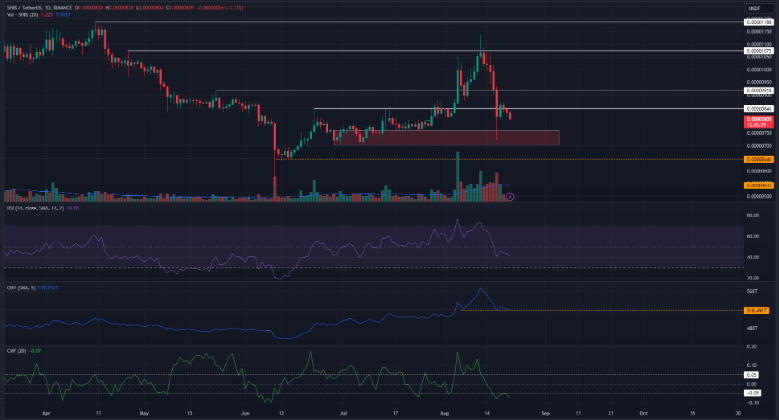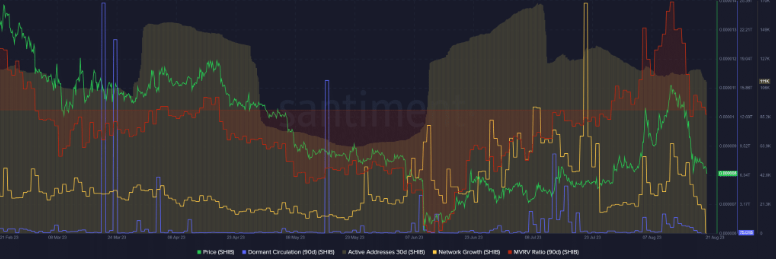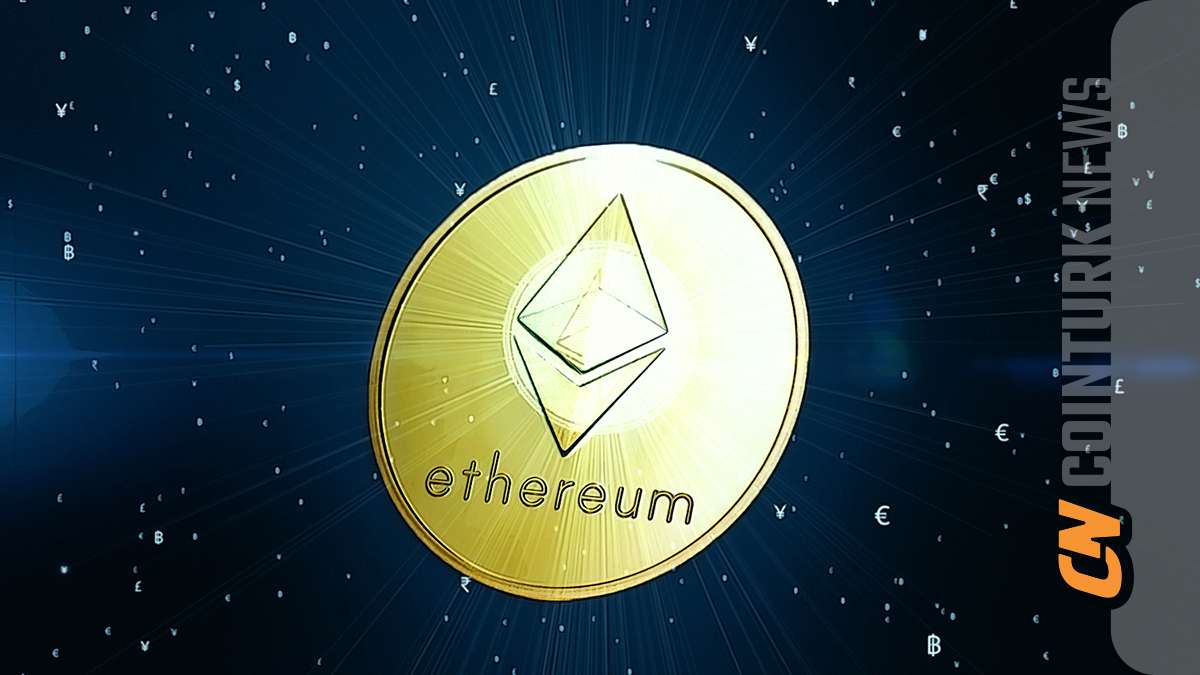Shiba Inu (SHIB) experienced significant losses in its price throughout last week. On August 13th, there was a strong upward trend for the memecoin. Moreover, it seemed to be progressing towards its highest level in April. It was within a strong upward trend on the daily chart.
This trend started from a demand zone that had previously been tested in June 2022, which began in early July. At the time of writing this article, Shiba Inu seemed to be once again heading towards this zone. So, can buyers halt the downtrend?
The Future of Shiba Coin
After August 13th, SHIB faced losses of up to 33.1% within four days, as prices dropped from $0.0000108 to $0.00000725 on August 17th. SHIB climbed to retest the $0.0000086 region on August 18th, resulting in a bounce and subsequent rejection.
The market structure on the daily chart showed a strong downtrend, and the Relative Strength Index (RSI) fell below the neutral 50 to reinforce this idea. The On-Balance Volume (OBV) remained tied to the support level at the beginning of August, but the Chaikin Money Flow (CMF) indicated significant capital outflow from the market.

It was likely that this selling pressure would bring SHIB back to the $0.000007 region, where a bullish order block (red box) had been present since June 28th. Since the first test and subsequent bounce seemed to be rejected from the $0.0000086 resistance in the past two days, this region may not provide a strong positive response in the next retest.
Decreased Activity of Shiba Inu
The price movement of Shiba Inu highlighted the power of bears. However, despite heavy selling pressure, the dormant circulation metric did not see a sharp increase. This indicates that many addresses preferred to hold the coin on the chain rather than selling it in panic.
Nevertheless, the metrics did not paint a positive picture. The Market Value to Realized Value (MVRV) ratio took a hit, and network growth declined to the lowest levels since the end of July. Daily active addresses also showed a gradual downtrend in the past three weeks. Together, these indicators showed a decrease in user adoption and activity, which did not reflect positively on SHIB.


 Türkçe
Türkçe Español
Español










